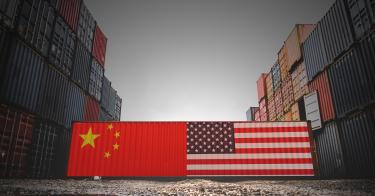In these days of social media and the 24-hour news cycle, messaging on trade is often polluted with hyperbole and statements lacking facts and accurate data. The current trade dispute with China, in particular, is wrought with misconceptions.
As a native Michigander, two myths about the manufacturing industry stand out. Politicians say that America has lost thousands of jobs to China and other countries, or that America doesn't make anything anymore. These claims often point to 2001 as the culprit, the year that China joined the World Trade Organization. Reality, however, is much more complex.
It is true that fewer Americans are employed in manufacturing today. Since 1999, manufacturing employment has decreased by more than 4 million jobs. However, those jobs have been offset by an increase in private-sector employment.
In 2017, 124 million Americans were employed in the private sector, whereas that number was just 109 million in 1999. Over that nearly 20-year period, America has added 15 million jobs. In short, there has been no net job loss because of trade with China, or any other country.
The more compelling story for job losses in manufacturing is actually rooted in improved labor productivity, driven by technology and innovation. When adjusted for inflation, one employee in 1999 could produce $412 worth of output, but that number was $835 worth of output in 2017. While fewer Americans are working in manufacturing today, they are significantly more productive.
Not only are Americans employed in the manufacturing industry more productive, they are producing more than before China joined the WTO. Since 1999, manufacturing output (in real terms) has increased by more than $400 billion. Significant growth has occurred in manufacturing sectors such as petroleum, coal, chemicals, transportation equipment, and fabricated metals.
In light of these facts, what are the real concerns about trade with China?
The Trump administration correctly highlights concerns about intellectual property protection and restrictions on investment in China. Many of the intellectual property concerns are more nuanced than just simple theft.
American companies willingly enter into contracts with firms in China, and some of them may be partially owned by the Chinese government. It is common practice in business and international contracts to license or allow temporary usage of intellectual property, or in the case of many transactions what are referred to as trade secrets.
While there are domestic laws to protect U.S. companies in these scenarios, the ability to apply these protections abroad is more difficult, especially when operating in a country with which the U.S. lacks a free-trade agreement.
U.S. companies are not always guaranteed the same rights and protections abroad. Most modern free-trade agreements attempt to mediate this concern with provisions called investor-state dispute settlement. These provisions ensure that American companies are afforded the same rule of law as if they were operating in the United States.
The U.S. must hold its trading partners accountable to their obligations, just as those partners should keep U.S. trade policy in check. Without free-trade agreements, it is more difficult to enforce rules and norms in trade.
The United States can enforce some trade rules through the dispute resolution system at the WTO, which has been a very effective tool. Since 2004, the U.S. has won 100 percent of its cases against China, and in all but one case, China has changed its behavior.
The U.S. trading relationship with China has its flaws, but it is important for policymakers to focus on addressing the real problems rather than relying on rhetoric.
This piece originally appeared in The Detroit News



